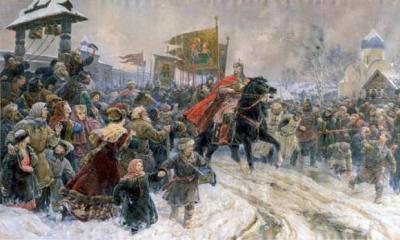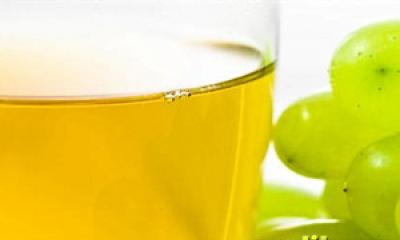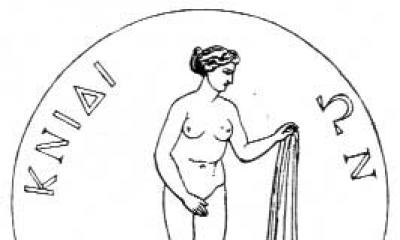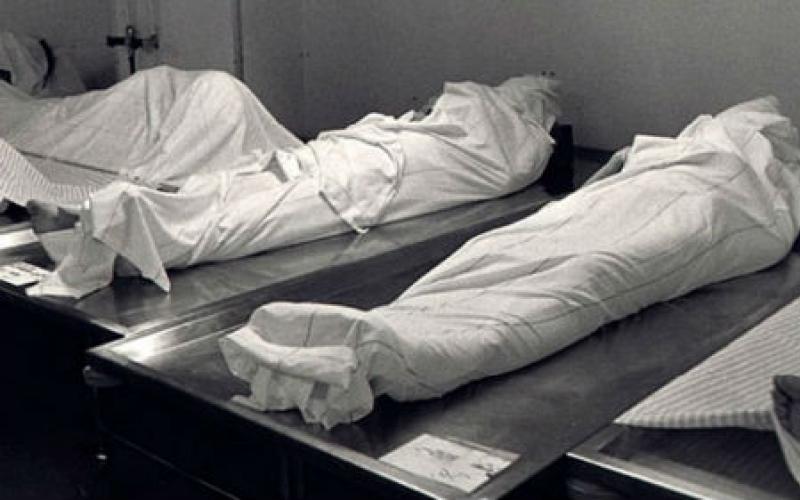Probably the first device that could, if not measure, then at least evaluate temperature, was Galileo's thermoscope : a flask the size of egg, the neck of which is thin, like a wheat stalk, was filled with water up to half and immersed in a cup. Despite this simplicity, the device was very sensitive, although it reacted, in addition to temperature, to air pressure.
The tool must be vertical throughout its working range. At a time when chemical analysis was still beginning, the use of physical property determination was extremely important in characterizing a given material. Thus, such quantities as melting and boiling points, refractive index, density, color and other physicochemical parameters are extremely important for analysts. The connection between a density meter and a thermometer is easy to understand, since the density of a liquid depends on temperature. This situation also applies to liquids containing dissolved solutes, which means a means of estimating the concentration of a solute by determining the density of the corresponding solution.
In 1636, the word first appears "thermometer" . So called device of the Dutchman K. Drebbel — "drebbel instrument" for measuring temperature, having as many as 8 divisions.
Thermos to op Galileo. Drawing from the 17th century.
I. Newto n in work 1701 "On the Scale of Degrees of Heat and Cold" described 12 degree scale , 0 0 which corresponded to the freezing point of water, and 12° to the body temperature of a healthy person. All these and many other thermometers were gas thermometers: when heated, air expanded in them.
In such cases, instead of determining the density of the material, it is customary to use a concentration scale obtained by the ratio, where each density corresponds to a certain concentration of a dissolved solute. This was of particular importance in industrial processes26. Vigret, the same idealizer of the distillation column that bears his name: one cannot manage unitary processes without knowing how to handle instruments for measuring physical properties. Practicality of use, low cost and simultaneous reading of two parameters of great practical importance were responsible for the wide acceptance of the device in the consumer market.
The first liquid thermometer, similar to a modern thermometer, was made by the German physicist G. Fahrenheit in 1724. Designing alcohol and mercury thermometers for more than fifteen years, he figured out how to make them identical and more accurate readings: you need to take several points with a known temperature, put their values on the scales and divide the distances between them.
Today, especially in the fermentation industry, the densimeter thermometer plays a paramount role, and is also widely used in physico-chemical experiments and in the preparation of acid and ammonium hydroxide solutions from the assessment of the concentration of the starting material with this instrument.
In the case of solutions, there are several types of instruments: acytometers, saccharimeters, alcohol meters and salmeters, which represent almost all possible instruments of this type that exist in the collection under consideration. The readout values can be either in narrow ranges or in a very wide range, according to the required accuracy. For pure liquids and some solutions, values have been expressed as density values.
Fahrenheit took the lowest temperature of the extremely severe winter of 1709 as 0 ° and later imitated it in a mixture of table salt and ammonia with ice. As the second reference point, he took the temperature of melting ice and divided this segment by 32 degrees. The third point - the temperature of the human body - turned out to be almost 98, and the boiling point of water fell to 212.
Even in older models, the reference temperature at which the instrument was calibrated and the correction factors were scaled if the instrument was used outside of this reference. They are shown as representative examples of thermometer-densimeters used for over a hundred years.
Electronic thermometers are serious candidates to replace mercury thermometers. Despite their widespread use over the past 300 years, ecological problems related to this chemical element tend to disappear from laboratories with the evolution of the electronic temperature measuring instrument, which seeks to replace metal where possible.
In A. Gaidar's screenplay "Commandant of the Snow Fortress" there is such an episode:
“The nanny points to Sasha:
- Here, father, he has a fever.
Every person has a temperature.
“He has a temperature of one hundred degrees,” Zhenya says.
“It’s not for everyone,” the doctor agrees.
Dialogue invariably evokes a cheerful animation among young readers, but children in the United States and England, where it is still accepted Fahrenheit , his comedy may not be appreciated: the patient's temperature is 100 ° - just a slight fever, which just can be in everyone - 37.8 ° C.
It is not intended for detailed description operation of these instruments, but it is important to note that the electronic thermometer has a principle of operation based on electrical sensors such as thermocouples, resistance thermometers and thermistors, in addition to infrared radiation, a version that does not require physical contact between the thermometer and the object whose temperature is to be measured. The response of these sensors to temperature is a non-linear function. AT recent times analog signal reading has been replaced by digital, more convenient and now even cheaper.
Used in France and Russia Reaumur scale created in 1730.
Kom Natny thermometer of the beginning of the 20th century with Celsius and Réaumur scales.
.
R. Reaumur. Thermometers of this type existed in our country until the 1930s.

French naturalist, scientist with a broad outlook, "Pliny of the XVIII century", as his contemporaries called him, R. Reaumur built it in accordance with the thermal expansion of the liquid. Having discovered that when heated, a mixture of water and alcohol between the freezing and boiling points of water expands by 80 thousandths of its volume (the modern value is 0.084), Réaumur divided this interval into 80 degrees.
Both the operating range and the error limits are highly dependent on the sensor used. One of the main uses is as a temperature standard for industrial calibrations, given the practicality of use. For this application, the thermometer must have good time stability. For a correct specification of the model, in addition to the measured temperature, it is necessary to compare the tolerance of the measurement he intends to make with the specifications of the thermometer.
The electronic model has several advantages29: low weight, low cost, fast response to temperature changes, good mechanical stability, and elimination of human error in reading the temperature in a conventional thermometer. In medicine, this instrument is accurate on the order of one tenth of a degree and requires only about a tenth of the time it takes to measure a patient's temperature compared to a classic clinical thermometer. In addition to these works, the growing use of decorative and functional objects such as stationery in general, paintings, clocks and illuminated signs in public spaces must be emphasized.
A little earlier, at the beginning of the 18th century, thermometers of the St. Petersburg academician J. Delisle with a 150-degree scale on the same temperature range were common in Russia, but did not last long. Displaced them Réaumur thermometers were in use for almost two centuries, and only some 50-60 years ago finally gave way to Celsius thermometers with a modern 100-degree scale .
This is due to the possibility of manufacturing sensors of various sizes, which allows them to be inserted into various objects. In addition to electronic resources, the following elements can still be found: the presence of an on-off command; zero adjustment and transducer circuits in Celsius and Fahrenheit.
Concepts such as specific heat capacity, latent heat of fusion and vaporization, thermal conductivity, etc. have been established. Which received practical methods of measurement, not viable if thermometry has not reached the level of development confirmed since the Fahrenheit era.
By the end of the 18th century, the number of different temperature scales approached two dozen, which was both inconvenient and unnecessary. In addition, it soon became clear that even carefully calibrated instruments with different liquids show different temperatures. At 50 ° C, according to a mercury thermometer, an alcohol one showed 43 ° C, a thermometer with olive oil-49 ° C, with clean water - 25.6 ° C, and with salt - 45.4 ° C.
Strictly speaking, all physical and chemical processes involve the release or absorption of energy. There is an interesting work that details the principle and versatility of the calorimeter 32. According to Dulon, the unit of heat was taken to be the amount needed to heat one stage, one gram of water.
Temperature manifests itself in many different forms and in many different applications of chemistry. However, strictly speaking, the interest lies in the direct and natural relationship between both, which occurs through thermochemistry, which describes the thermal effects that are observed in chemical reactions.
Found a way out famous English physicist W. Thomson (Lord Kelvin) . In 1848, he proposed to measure not temperature, but the amount of heat that in a certain process, called Carnot cycle , is transmitted from a hot body to a cold one: it is determined only by their temperatures and is completely independent of the heated substance. In the thermodynamic or absolute temperature scale built on this principle, the unit of temperature is called the kelvin .
When the burning of the body was recognized as a chemical reaction, an attempt was made to determine the relationship between chemical phenomena and heat. Guericke O. demonstrated that the flame "scoops matter out of the air", and Robert Boyle discovered that the "calcification" of lead removes components of the air.
Dulong noted that the combustion of carbon in nitrous oxide was more exothermic than in air. This required much more thorough research than the simple practical and empirical application of a method or concept. 36 The initial applications of combustion were more empirical than theoretical in nature, with the development of the steam engine, a key player in the first revolution Industrial, notable representative example 2, 3. An increase in heat leads to a reaction in the opposite direction to release energy.
The thermodynamic scale was good for everyone except me one: in everyday practice, thermal measurements with subsequent calculations are extremely inconvenient, and even carnot cycle, perfectly studied theoretically, is difficult to reproduce not in a specialized metrological laboratory. Therefore, on its basis, in 1968, it was finally established International Practical Temperature Scale (IPTS-68) , which is based on 11 reproducible reference points between triple point in hydrogen (13.81 K) and the solidification temperature of gold (1337.58 K ) and diverges from the thermodynamic scale in the boiling region of water by only 0.005 K. This scale is still used today.
The explanation of the mysticism and mysteries associated with the behavior of some reaction systems was explained after the work of Le Chatelier. The thermometer, although widely used today, is an instrument of exceptional versatility in industry, science and Everyday life, showed a very slow historical evolution due to the empiricism associated with heat and related phenomena, in addition to the individualism of each of them to handle the temperature in their own way. Only when reproducible and reliable instruments could be made and thermometric scales could be established for practical use did the thermometer become an essential element in scientific laboratories.
In English and American scientific literature, one sometimes encounters the absolute scale of the Scot W. Rankin (mid-nineteenth century), one of the founders of technical thermodynamics. Its zero point coincides with 0 K, and degree Rankine equal in magnitude to degrees Fahrenheit.
Only four of the entire set of temperature scales have survived to our time, although this is clearly too much. In science, temperature is expressed in Kelvins, but in life we use degrees Celsius and occasionally meet the Réaumur and Fahrenheit scales.
The evolution of physics and science in general has appreciated the use of the thermometer in characterizing and determining an increasing number of physical, chemical, biological parameters, etc. Making it an indispensable basic subject for the field of study and for the industrial segment 37.
In this regard, the thermometer is just one of many examples where scanning has revolutionized the format and applicability of instruments. Chemical thermodynamics, ed. Physics course, company improvements: Sao Paulo. Thermometry is the part of thermology that studies temperature and its forms by which it can be measured.
It can be done using special ratios (formulas) or automatically on the pages of our website (following the link on the left).
The history of the invention of the thermometer, thanks to the translations of the heritage of ancient scientists, has been well preserved.
It is described that the Greek scientist and physician Galen made the first attempt to measure temperature in 170 AD. He documented the standard temperature of boiling water and ice.
Before we enter into thermometry, let us define the states of molecular aggregation of matter. 1st fixed point = melting point of ice 2nd fixed point = boiling point of water. Once the fixed points of water are defined on the Celsius scale, we will highlight 2 important temperature scales; Fahrenheit and Kelvin.
Fahrenheit. 1st fixed point: 32 2nd fixed point: 212. . Kelvin scale. From the respective fixed point values of each scale, we can relate these scales to obtain an equation that converts the temperature on a given scale to another scale.
Heat meters
The concept of temperature measurement is fairly new. The thermoscope, essentially a heat meter without a scale, was the forerunner of the modern thermometer. There were several inventors working on the thermoscope in 1593, but the best known is Galileo Galilei, an Italian inventor who also improved (but did not invent) the thermoscope.
By interpolation, we get the equation. Summary. We place a graduated graduated thermometer bulb and a thermometer bulb to be calibrated inside the becker. with a maximum volumetric capacity of 400 ml. We wait for thermal equilibrium to occur and measure the temperature of the water with a graduated thermometer. we mark the thermometer without liquid column height graduation with a porous tip pen. To measure the boiling point of ethyl alcohol and to identify systematic and gross errors in the calibration of the thermometer and the development of the conversion equation.
A thermoscope can show differences in heat, allowing observers to know if something has been getting warmer or colder. However, a thermoscope cannot provide an accurate temperature in degrees. In 1612, the Italian inventor Santorio added his own numerical scale to the thermoscope and it was used to measure a person's temperature. But it still lacked a standardized scale and precision.
Purpose This is the calibration of a mercury thermometer. Electrical and non-electric sensors. this extension allows you to browse. Mercury is a liquid metal at room temperature and is very sensitive. Several temperature measuring instruments have been developed. When the temperature changes, it expands through the glass tube. In this article. among which the most commonly used mercury thermometer. where is mercury located? reading a graduated scale. we present the calibration and operation of a mercury thermometer.
Temperature measurements are fundamental in research and development in science and technology. The search for accuracy and accuracy of measurements with the lowest possible experimental errors is constant. using devices. his work is based on the expansion of mercury. because most of the physical and chemical properties have some temperature dependence. Body temperature. in search of more accurate readings for the purposes for which they are intended. to get the best qualitative and quantitative results.
The invention of the thermometer belongs to the German physicist Gabriel Fahrenheit, who, together with the Danish astronomer Olaf Christensen Römer, developed a meter based on and using alcohol.
In 1724, they introduced the standard temperature scale that bears his name, the Fahrenheit, a scale that was used to record changes in hotness in precise form. Its scale is divided into 180 degrees between the freezing and boiling points of water. 32°F freezing water and 212°F boiling water, 0°F was based on the heating of an equal mixture of water, ice and salt. Also, the temperature of the human body is taken as the basis of this sign system. Initially, the normal human body temperature was 100°F, but has since been adjusted to 98.6°F. An equal mixture of water, ice, and ammonium chloride is used to set to 0°F.
Fahrenheit demonstrated an alcohol-based thermometer in 1709 before the discovery of a mercury-based counterpart, which proved to be more accurate.
In 1714 Fahrenheit developed the first modern thermometer, a mercury thermometer with more accurate measurements. It is known that mercury expands or contracts with an increase in the physical value of heat or falls. This can be considered the first modern mercury thermometer with a standardized scale.
The history of the invention of the thermometer notes that Gabriel Fahrenheit, a German physicist, invented the alcohol thermometer in 1709 and the mercury thermometer in 1714.
Types of temperature scales
AT modern world certain types of temperature scales are used:
 1. The Fahrenheit scale is one of the three main temperature sign systems in use today with the other two being Celsius and Kelvin. Fahrenheit is the standard used to measure temperature in the United States, but most of the rest of the world uses Celsius.
1. The Fahrenheit scale is one of the three main temperature sign systems in use today with the other two being Celsius and Kelvin. Fahrenheit is the standard used to measure temperature in the United States, but most of the rest of the world uses Celsius.
2. Shortly after the discovery of Fahrenheit, Swedish astronomer Anders Celsius announced his own scale, which is referred to as Celsius. It is divided into 100 degrees separating the boiling point and freezing point. The original scale, set by Celsius 0 as the boiling point of water and 100 as the freezing point, was changed shortly after the invention of the scale to 0°C freezing, 100°C boiling point.
 The term Celsius was adopted in 1948 by the International Conference on Weights and Measures and the scale is the preferred temperature gauge for scientific applications and in most countries of the world except the United States.
The term Celsius was adopted in 1948 by the International Conference on Weights and Measures and the scale is the preferred temperature gauge for scientific applications and in most countries of the world except the United States.
 3. The following scale was invented by Lord Kelvin of Scotland with his gauge in 1848, now known as the Kelvin scale. It was based on the idea of absolute theoretical heating, in which all substances have no thermal energy. There are no negative numbers on the Kelvin scale, 0 K is the lowest possible temperature in nature.
3. The following scale was invented by Lord Kelvin of Scotland with his gauge in 1848, now known as the Kelvin scale. It was based on the idea of absolute theoretical heating, in which all substances have no thermal energy. There are no negative numbers on the Kelvin scale, 0 K is the lowest possible temperature in nature.
Absolute zero Kelvin means minus 273.15°C and minus 459.67 F. The Kelvin scale is widely used in scientific applications. The Kelvin units are the same size as the Celsius scale, except that the Kelvin scale sets itself to 0.
Conversion factors for temperature types
Fahrenheit to Celsius: Subtract 32, then multiply by 5, then divide by 9;
Celsius to Fahrenheit: multiply by 9, divide by 5, then add 32;
Fahrenheit to Kelvin: subtract 32, multiply by 5, divide by 9, then add 273.15;
Kelvin to Fahrenheit: subtract 273.15, multiply by 1.8, then add 32;
Kelvin to Celsius: add 273;
Celsius to Kelvin: Subtract 273.
Thermometers use materials that change in some way when they are heated or cooled. The most common are mercury or alcohol, where the liquid expands when heated and contracts when cooled, so the length of the liquid column is longer or shorter depending on the heat. Modern thermometers are calibrated for temperatures in both Fahrenheit (used in the US), Celsius (worldwide) and Kelvin (used mostly by scientists).








